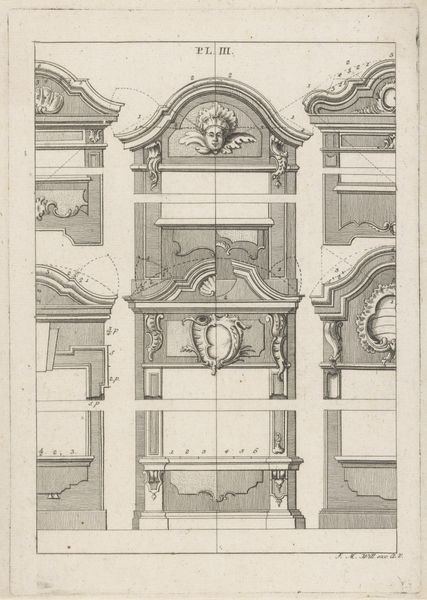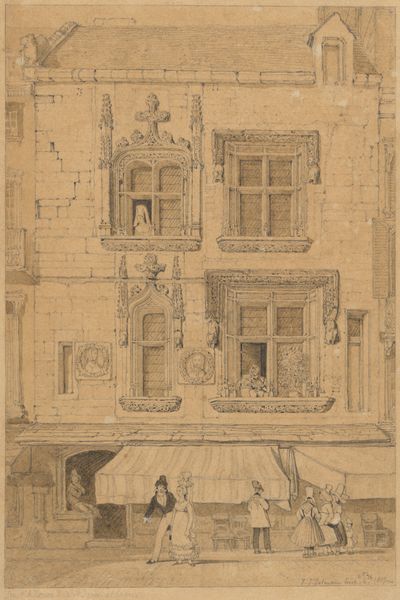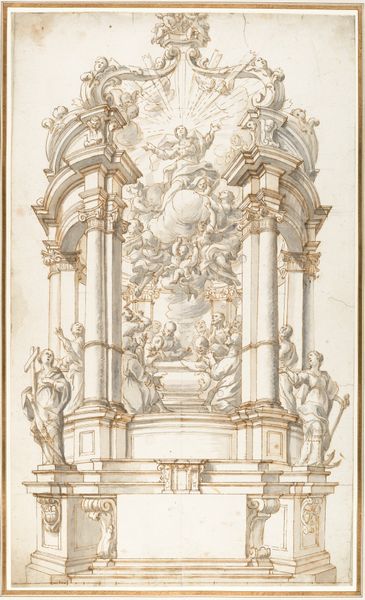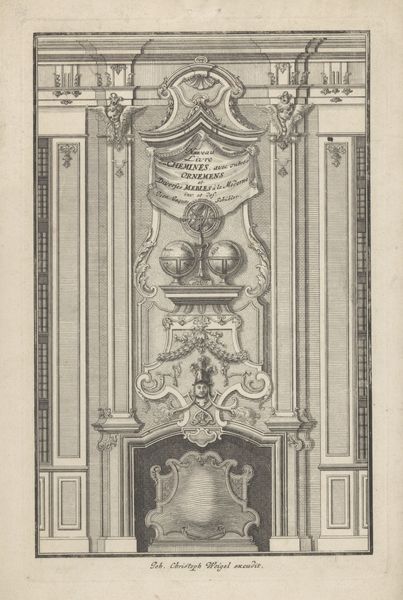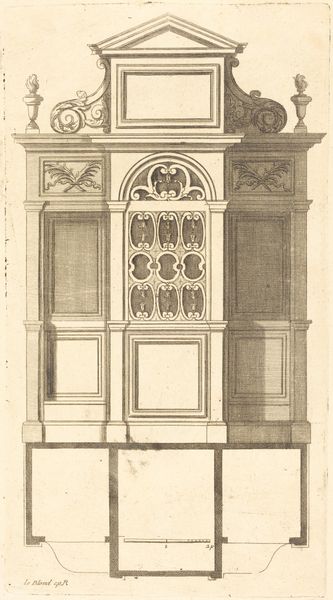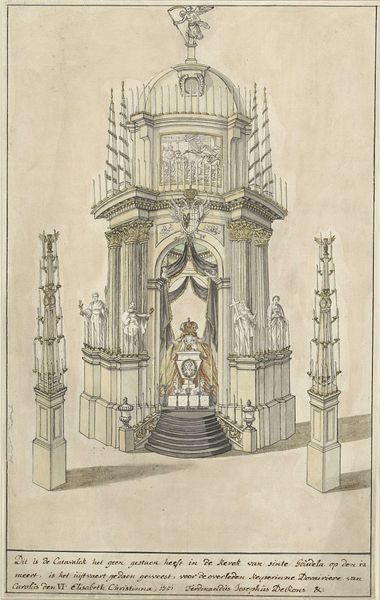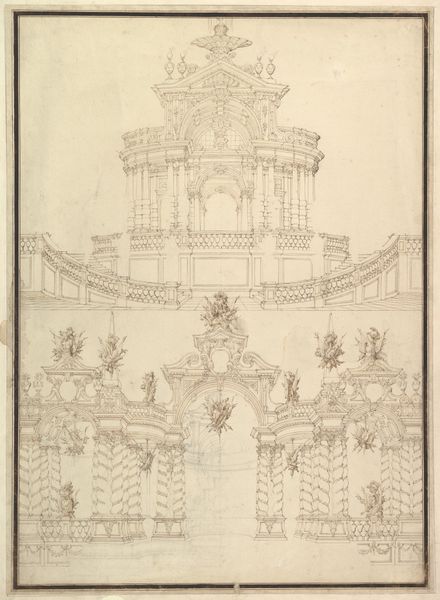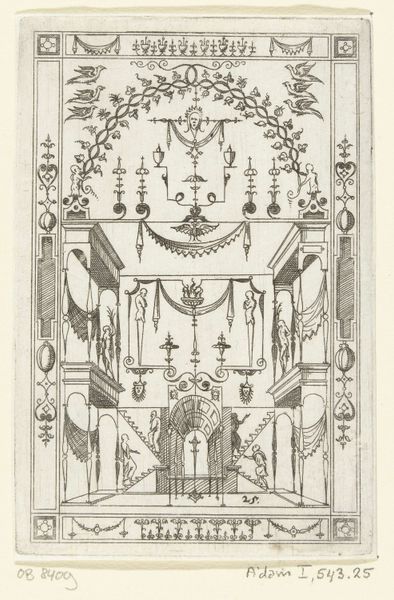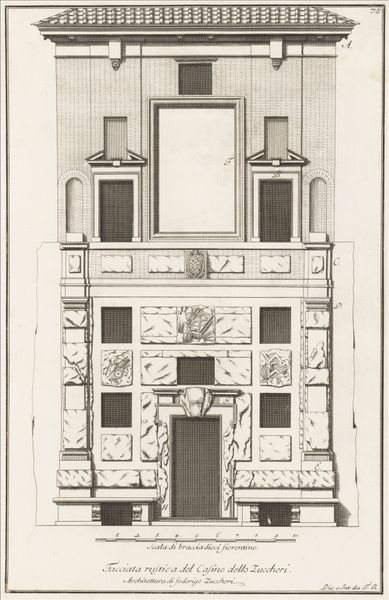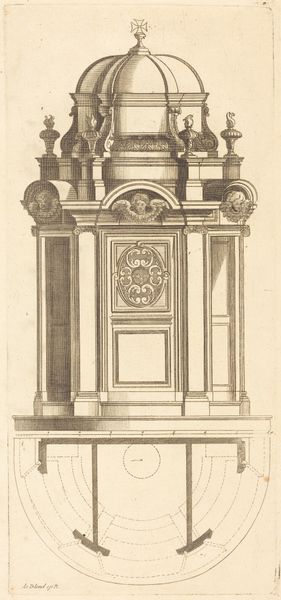
Design for the Facade of a Palace with the Coat of Arms of Pope Clement IX 1705 - 1715
0:00
0:00
drawing, print, engraving, architecture
#
architectural sketch
#
drawing
#
baroque
# print
#
engraving
#
architecture
Dimensions: 13-11/16 x 10-1/4 in
Copyright: Public Domain
Editor: This architectural sketch, “Design for the Facade of a Palace with the Coat of Arms of Pope Clement IX,” is estimated to be from 1705-1715. It’s an engraving, so a print, by an anonymous artist. The facade itself seems almost oppressively ornamented. What story does this building tell, for you? Curator: For me, it speaks volumes about power, privilege, and the construction of identity through architecture. Think about the Baroque period and its relationship to the Catholic Church's response to the Reformation. This facade isn’t just about aesthetics; it’s a strategic display of authority. Editor: A display for whom, exactly? Was this meant to inspire awe, or maybe… obedience? Curator: Absolutely both, and more. The highly ornate decoration, the imposing scale – it all contributes to the visual language of dominance. Consider the coat of arms prominently featured; it visually anchors the entire design. But also think of it as gendered space: Who inhabited such spaces? Who was excluded? And what were the messages communicated by this deliberate construction of access and denial? Editor: That's fascinating. I hadn’t considered how architecture could function as a sort of… exclusionary device. Curator: Exactly. The palace isn't simply a dwelling. It's a symbol, aggressively asserting control and defining social roles through its very structure. This theatrical facade stages a very specific drama of power. Editor: Looking at it now, it does seem less about beauty and more about… making a statement. Curator: And that statement resonates even today. Architecture continues to shape our perceptions of authority and access, reinforcing, or even challenging existing social structures. Understanding that historical context, recognizing its implications then and now, is vital to engaging critically with this design. Editor: This really changes how I see architectural drawings. I’m going to keep all this in mind! Curator: Me too, that final point on how these kind of architectures might be challenged. Thank you for your perspective!
Comments
No comments
Be the first to comment and join the conversation on the ultimate creative platform.


